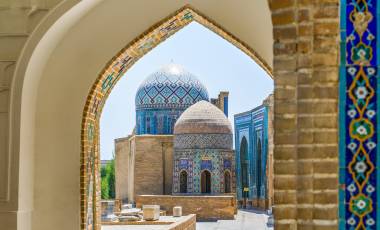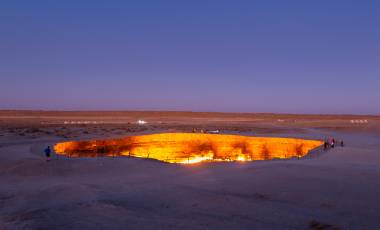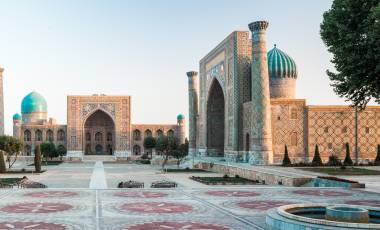Home to the Stans, Central Asia’s conjures up images of majestic blue-domed cities to nomadic traders travelling along the iconic Old Silk Road. It is here, we follow Alex Keefe, a member of our Customer Services team, as she set out on her own adventure to discover how we as Exodus travellers can help promote and preserve the unique cultural heritage you can find across the Silk Road.
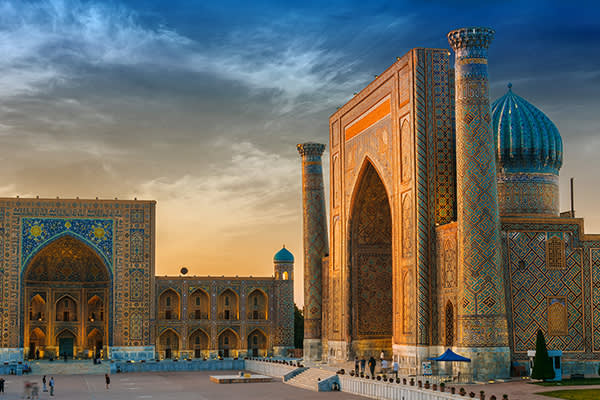
Last summer I was given the opportunity to experience one of our Central Asia adventures for myself, travelling across The Silk Road. This particular route explores Uzbekistan, Kazakhstan and Kyrgyzstan, which has for centuries been walked by merchants making their way through deserts, and across mountains to reach the great civilisations of the Mediterranean and China.
From the impressive architectural mausoleums in Uzbekistan to the natural and unspoilt beauty of Kyrgyzstan, Central Asia is the gateway for explorers to discover this underrated part of the world. The trail along the Silk Road is often recognised for its blue tarred Islamic buildings and infusion of history, being only a short distance away from the spectacular mountain scenery that Kyrgyzstan has to offer. It was clear from my experience that preservation of ancient culture and heritage is essential to the communities who live here, on both a large scale from vast popular heritage sites to small and homely means of living.
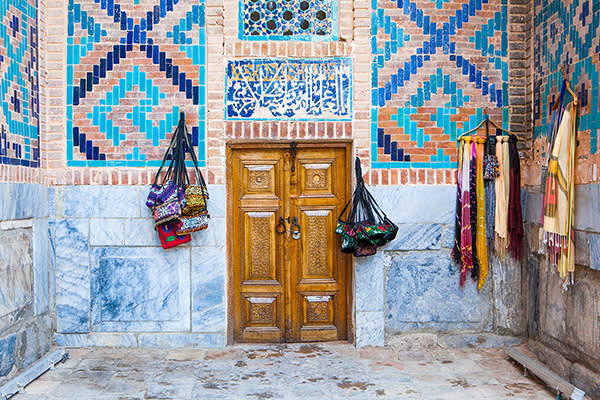
The Heart of the Silk Road
One of the most impressive and striking places on this journey through Central Asia is the ancient city of Samarkand, which was included in the UNESCO World Heritage list in 2001. Our local guide revealed that Registan, meaning “a sand place”, was originally masked by sand rather than the beautiful madrassahs you can see there today, and the three madrassahs within the square were once – and still are – renowned as being the highlight for those who desire to learn more about the medieval architecture embedded within this ancient city.
In this historical building, you will find residents selling handmade products such as wooden book stands, textiles and colourful ornaments, and with only a small entrance fee, you can uncover hidden stories from locals which have been passed down through generations, enabling the history of the culture to live on.
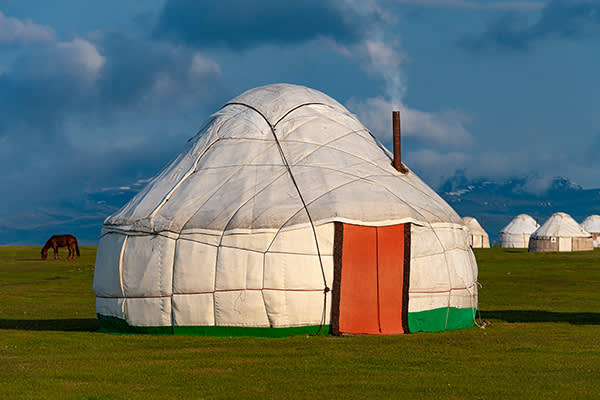
Home Is Where The Yurt Is
After visiting Central Asia, a stay in a yurt camp is definitely an authentic and unmissable experience, enabling visitors to gain an insight into the life of a true nomadic person. While yurts are a popular option of accommodation when exploring this part of the world, local residents still use them for their traditional means, which allows tourists to engage and experiment with a different and long-established way of life.
During our visit, we interacted with welcoming families who invited us into their circular tents, giving us a real impression of the nomadic lifestyle. Through our stay here, we were able to foster a mutual cultural exchange, knowing that our tourism is appreciated and acts as a source of income, supporting their business and benefitting the local communities that we interact with.
If you want to know more about our Silk Road adventure, click here. For a longer trip that covers the 5 stans in 3 weeks, find out more here.

